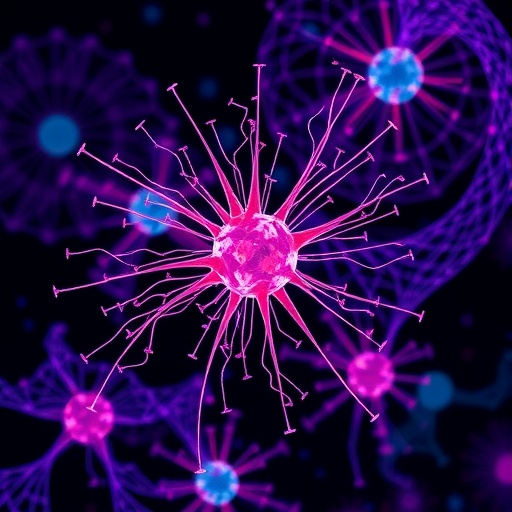ROSEMONT, Ill. (July 5, 2017) — Nearly one in three competitive athletes experiences low back pain. According to a literature review in the July 2017 issue of the Journal of the American Academy of Orthopaedic Surgeons, lower (lumbar) back pain is a commonly reported symptom among the general population; however, low back pain among elite athletes who play varsity or professional sports requires additional important considerations.
"Competitive players stress their lumbar spine for hundreds of hours a month, thereby predisposing themselves to specific injuries that should be recognized by healthcare practitioners," says Wellington K. Hsu, MD, lead review author and orthopaedic spine surgeon at Northwestern Memorial Hospital. The human spine is made up of 24 bones, called vertebrae, stacked on top of one another. In between each of these bones are flat, round disks with a tough, flexible outer exterior and a soft, jelly-like center that act as shock absorbers when walking or running.
Athletes are at greater risk of developing lower back conditions when:
Intense training regimens start and continue between the ages 10 and 24 years. This may increase the likelihood that young athletes develop symptomatic lumbar disk degeneration — a natural degradation of disk, and narrowing of the space between vertebrae due to the aging process. Surgical management, considered as a last resort, includes removing the diseased disk, and fusion (locking one bone to another bone) or total disk arthroplasty (replacing the diseased disk with an artificial device). However, few studies have looked at the outcomes of surgically treated athletes with lumbar disk degeneration.
Participating in elite sports with intense, repetitive movements between the ages of 20 and 35 years. This may also increase the likelihood that athletes experience lumbar disk herniation (LDH) — when the jelly-like center pushes against and through the outer exterior of the disk due to wear and tear, or a sudden injury, causing pain.
Among the general population, more than 90 percent of patients with LDH improve within six weeks of injury with nonsurgical treatment. An estimated 82 percent of elite athletes were able to return to their sport after nonsurgical treatment.
Young athletes showing signs of notable or severe low back pain should be checked for spondylolysis, also known as a pars interarticularis stress fracture or the breaking of a small connecting bone in the lower back that could cause a spinal bone to disconnect and slip forward. Spondylolysis is often noted in younger athletes who participate in sports that involve repeated stress on the lower back, such as gymnastics, wrestling, weightlifting, and diving. Early recognition of the symptoms could lead to healing of the injury.
Additionally, lifting heavy weights in unsupervised extreme sports training or without low back protection in any age group also could put athletes at greater risk of lower back injuries.
According to Dr. Hsu, nonsurgical therapy should be the first-line treatment in all athletes with lower back conditions because successful recovery rates from rehabilitation protocols are high. Nonsurgical treatment options may include medications to reduce inflammation, psychological support to establish an expectation for recovery and the rehabilitation process, and/or physical therapy to focus on core and back muscle strengthening and flexibility. Surgical management of lower back injuries among elite athletes is typically considered after all nonsurgical treatment has failed. "Expectations regarding surgical outcomes should be tailored for elite athletes depending on sport, and to sport-specific demands" says Dr. Hsu.
After surgery, recovery time, performance, and career lengths of elite athletes depend on the sport and its physical demands. As with any persons with a lower back injury, elite athletes should complete a rehabilitation program and be individually assessed for medical clearance before returning to work or play.
###
Follow the AAOS on Facebook and Twitter
Follow the conversation about JAAOS on Twitter
Disclosures
From the Department of Orthopaedic Surgery, Northwestern University Feinberg School of Medicine, Chicago, Ill.
Dr. Hsu or an immediate family member is a member of a speakers' bureau or has made paid presentations on behalf of AO North America; serves as a paid consultant to AO North America, Bacterin, Bioventus, CeramTec, Globus Medical, Graftys, LifeNet, Medtronic, Pioneer Medical, Relievant Medsystems, SI-Bone, Stryker Spine, and DePuy Synthes; has received research or institutional support from Medtronic; and serves as a board member, owner, officer, or committee member of the American Academy of Orthopaedic Surgeons, the Cervical Spine Research Society, the Lumbar Spine Research Society, and the North American Spine Society. Neither Dr. Jenkins nor any immediate family member has received anything of value from or has stock or stock options held in a commercial company or institution related directly or indirectly to the subject of this article.
J Am Acad Orthop Surg 2017;00:1-10 DOI: 10.5435/JAAOS-D-16-00135
Media Contact
Kayee Ip
[email protected]
847-384-4035
@aaos1
http://www.aaos.org
http://bit.ly/2tNnYoT
Related Journal Article
http://dx.doi.org/10.5435/JAAOS-D-16-00135
############
Story Source: Materials provided by Scienmag




